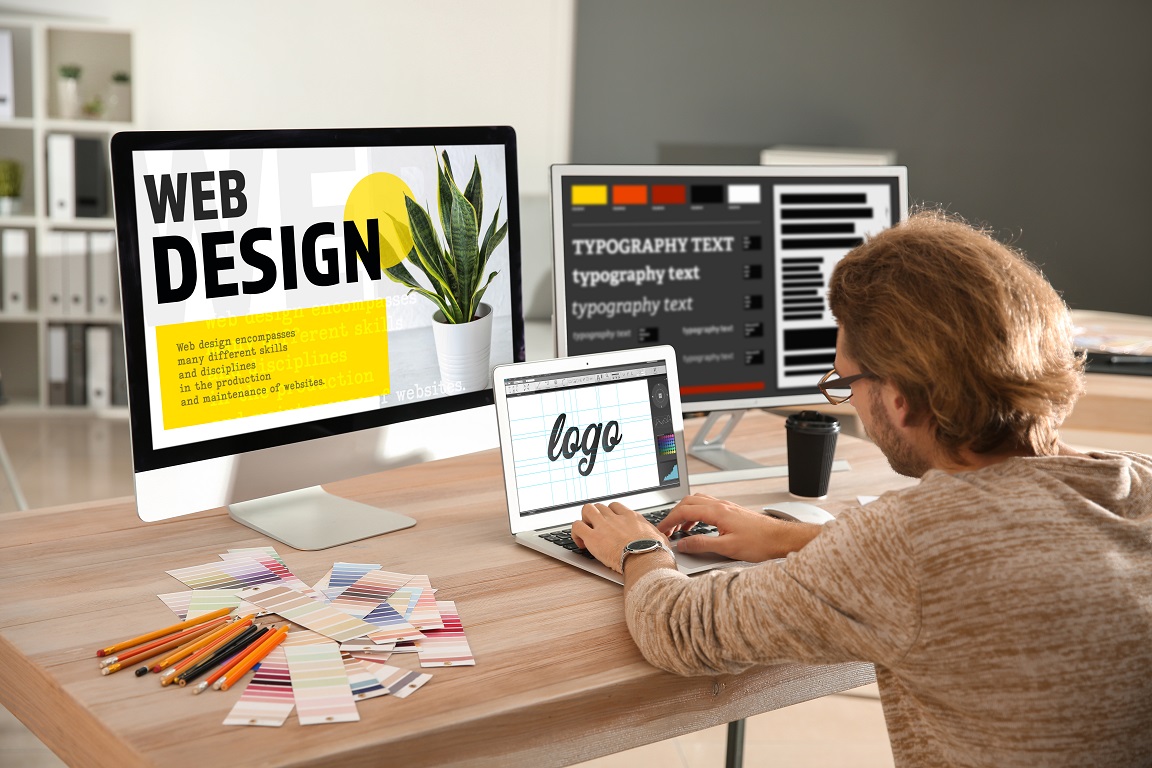Trick Factors To Consider to Bear In Mind When Creating a Modern Web Layout That Straightens With Present Patterns
In the ever-evolving landscape of internet design, it is crucial to consider several pivotal factors that not only mirror present patterns but likewise enhance user interaction. A receptive style is vital, making certain that users experience seamless functionality throughout different devices. Prioritizing individual experience through intuitive navigation and visual appeal can not be forgotten.
Responsive Design Principles
In the ever-evolving landscape of web style, the application of receptive design principles stands as a basic need for producing straightforward sites. Receptive style guarantees that websites render well on a selection of gadgets, from desktop computers to mobile phones and tablets. This adaptability is achieved with liquid grids, versatile pictures, and media queries, which jointly enable a single site to give an optimal watching experience throughout diverse systems.
The core of responsive design depends on its ability to adjust layout and material based on the user's screen dimension and orientation. By using family member devices like percentages instead of taken care of devices like pixels, designers can produce scalable layouts that keep aesthetic honesty. Additionally, employing media inquiries enables the application of different styles depending on the attributes of the gadget, facilitating tailored experiences that improve use.
Moreover, receptive layout is not simply a technological consideration; it is essential in accommodating the enhancing use of smart phones for internet browsing. As individual assumptions advance, making sure availability and capability across all systems ends up being vital for maintaining interaction and complete satisfaction. Hence, welcoming receptive style principles is important for contemporary internet advancement, cultivating inclusivity and future-proofing digital web content.
Emphasis on User Experience
Individual experience (UX) has actually become a main focus in modern-day website design, enhancing the principles of responsive design by focusing on exactly how individuals engage with sites. A well-designed UX can significantly influence individual retention, contentment, and involvement, underscoring the demand for developers to create satisfying and intuitive experiences.
Secret components of efficient UX style consist of use, performance, and appearances. Websites ought to be easy to browse, making certain users can locate the information they seek without confusion. Concise and clear navigating food selections, constant layout, and logical material company are important in achieving this objective. In addition, capability plays an important role; interactive components must work effortlessly throughout all devices and browsers.

Furthermore, integrating customer comments into the style procedure is important - web design. Conducting usability testing and event understandings from actual individuals can give beneficial information to fine-tune the layout and address discomfort factors. Inevitably, a solid focus on customer experience will certainly assist produce websites that resonate with visitors, fostering loyalty and driving conversions
Significance of Accessibility
Ease of access is a basic element of modern-day web style, guaranteeing that all users, no matter their disabilities or capabilities, can engage and navigate with electronic content effectively. As the net comes to be progressively you can check here important to daily life, it is essential that web sites are comprehensive, catering to a varied audience that includes individuals with visual, auditory, cognitive, and electric motor impairments.
Carrying out ease of access features not only abides by legal demands, such as the Americans with Disabilities Act (ADA) and the Internet Content Access Guidelines (WCAG), yet likewise improves user experience for every person. Accessible styles typically result in far better navigating, faster filling times, and boosted seo, profiting all individuals.
Additionally, cultivating a comprehensive electronic environment reflects favorably on a brand name's reputation. Business that focus on availability show social duty and a dedication to equity, which can enhance consumer loyalty and broaden their market reach.

Present Aesthetic Fads
Embracing present aesthetic trends is crucial for creating engaging and aesthetically attractive internet sites that capture user focus. In today's digital landscape, minimalism continues to control, stressing clean lines, ample white space, and straightforward navigation. This method not just boosts readability but additionally permits crucial material to radiate, aligning with individual assumptions for simpleness and quality.
Furthermore, making use of vibrant typography is increasingly preferred, offering a distinctive voice and enhancing brand name identification. Huge, attention-grabbing font styles can produce visual hierarchy, assisting users through the web content successfully. In addition, vivid shade combinations are making a comeback, permitting designers to evoke emotions and produce remarkable experiences.
One more trend is the consolidation of asymmetrical formats and natural shapes, which can include an element of shock and creative thinking, setting a web site aside from more standard layouts. The combination of immersive visuals, such as premium images and video clips, can engage customers and convey messages a lot more strongly.
As these aesthetic trends advance, it is essential for internet designers to stay informed and adapt their methods, redirected here guaranteeing their productions continue to be relevant and resonate with contemporary target markets.
Maximizing for Performance
While aesthetic factors to consider play a substantial role in bring in users, maximizing for performance is just as crucial to guarantee a smooth browsing experience. A well-designed internet site must pack swiftly and respond without delay to individual communications, as delays can bring about frustration and boosted bounce rates.
To accomplish optimum performance, programmers need to prioritize reducing file dimensions by compressing pictures and utilizing reliable coding methods (web design). Executing lazy loading methods can also improve speed by delaying the loading of non-essential sources until they are required. In addition, leveraging Material Distribution Networks (CDNs) can disperse static possessions more detailed to users, lowering latency
Furthermore, it is vital to make use of contemporary web innovations such as HTML5 and CSS3, which not just boost performance yet likewise improve compatibility across different tools and internet browsers. On a regular basis keeping track of website rate making use of tools like Google PageSpeed Insights can offer important understandings into locations for renovation.

Conclusion
In final thought, contemporary internet layout demands a diverse technique that incorporates responsive design principles, a focus on user experience, and stringent adherence to access requirements. Collectively, these factors to consider contribute to the creation of a natural and impactful on-line existence that meets the varied needs of modern users.
In the ever-evolving landscape of web style, it is important to consider numerous critical factors that not only mirror existing fads however additionally improve user involvement. A receptive style is extremely important, making sure that customers experience smooth capability throughout various gadgets.The core of responsive layout exists in its ability to adjust layout and content based on the user's display size and positioning.Additionally, incorporating individual feedback into the design procedure is crucial.In verdict, modern web layout demands a complex strategy that encompasses receptive design why not try this out principles, an emphasis on individual experience, and strict adherence to ease of access criteria.